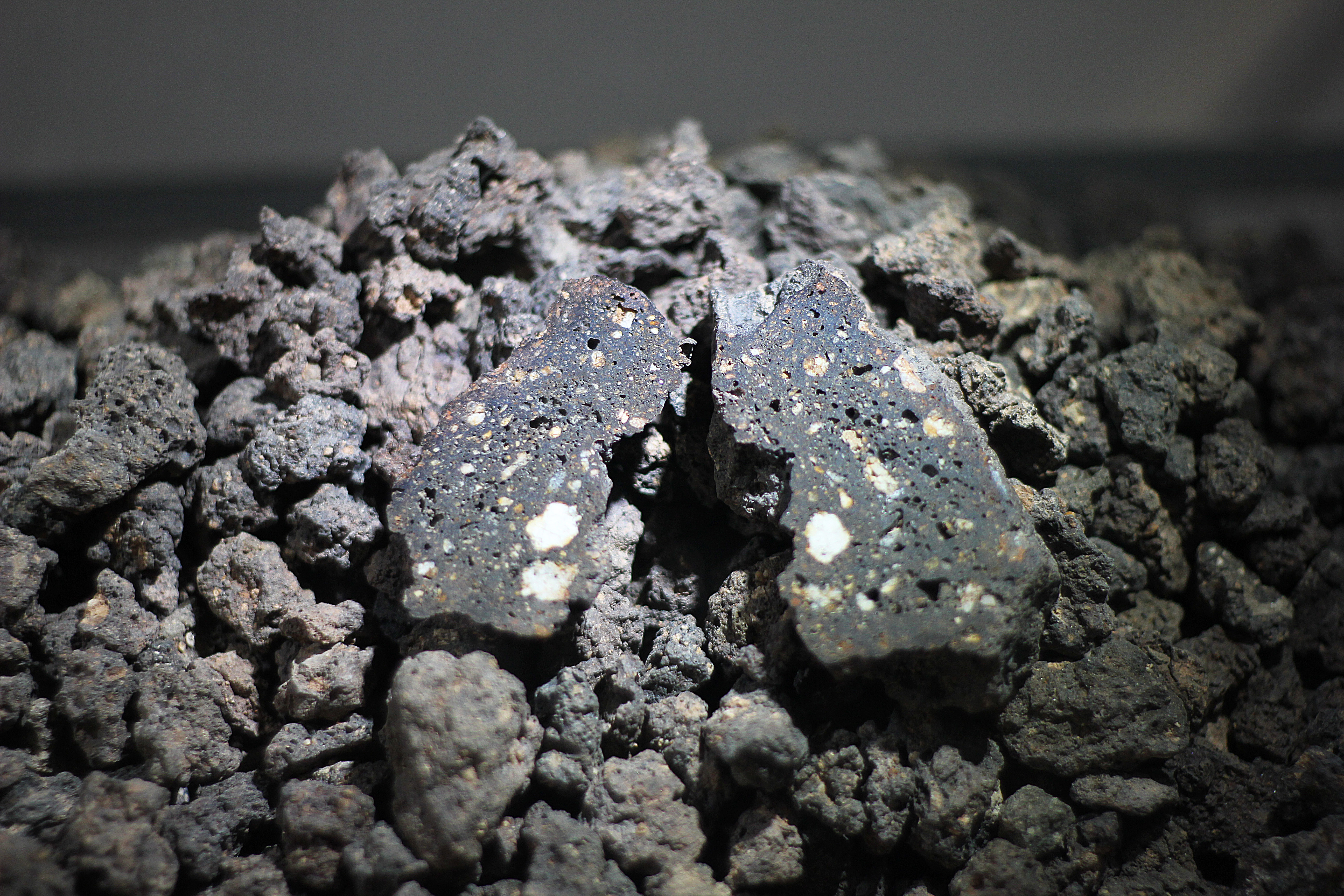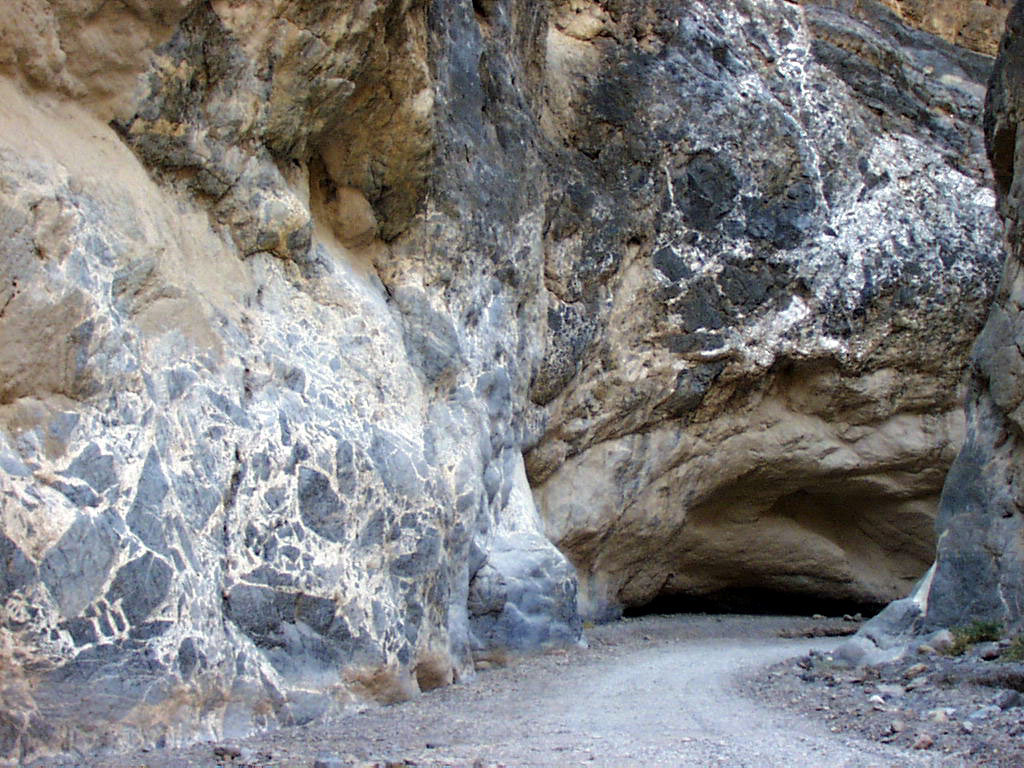|
Impactite
Impactite is rock created or modified by one or more impacts of a meteorite. Impactites are considered metamorphic rock, because their source materials were modified by the heat and pressure of the impact. On Earth, impactites consist primarily of modified terrestrial material, sometimes with pieces of the original meteorite. Creation When a large meteorite hits a planet, it can radically deform the rocks and regolith that it hits. The heat, pressure, and shock of the impact changes these materials into impactite. Only very massive impacts generate the heat and pressure needed to transform a rock, so impactites are created rarely. Characteristics Impactite includes shock-metamorphosed target rocks, melts (suevites) and mixtures of the two, as well as sedimentary rocks with significant impact-derived components (shocked mineral grains, tektites, anomalous geochemical signatures, etc.). In June 2015, NASA reported that impact glass has been detected on the planet Mars. Such mater ... [...More Info...] [...Related Items...] OR: [Wikipedia] [Google] [Baidu] |
Suevite
Suevite is a rock consisting partly of melted material, typically forming a breccia containing glass and crystal or lithic fragments, formed during an impact event. It forms part of a group of rock types and structures that are known as impactites. Name The word "suevite" is derived from "Suevia", Latin name of Swabia. It was suggested by Adolf Sauer in 1901. Formation Suevite is thought to form in and around impact craters by the sintering of molten fragments together with unmelted clasts of the country rock. Rocks formed from more completely melted material found in the crater floor are known as '' tagamites''. Suevite is distinct from the pseudotachylite in an impact structure as the latter is thought to have formed by frictional effects within the crater floor and below the crater during the initial compression phase of the impact and the subsequent formation of the central uplift. Occurrence Suevite is one of the diagnostic rock-types for large impact structures. It ... [...More Info...] [...Related Items...] OR: [Wikipedia] [Google] [Baidu] |
Lake Lappajärvi
Lappajärvi is a lake in Finland, in the municipalities of Lappajärvi, Alajärvi and Vimpeli. It is formed in a wide, partly eroded meteorite impact crater. The lake is part of Ähtävänjoki ( sv, Esse å) basin together with Lake Evijärvi that is located downstream (north) of it. The Lappajärvi impact structure is estimated to be 77.85 ± 0.78 million years old (Campanian age of the Late Cretaceous time period). Experts working on Finland's Onkalo spent nuclear fuel repository project have studied Lake Lappajärvi to help them project how Finnish landscapes might look one million years in the future and beyond. An island in the middle of the lake, Kärnänsaari (Kärnä Island), gives the name to the black impact melt rock (impactite) found there, locally called kärnäite. The towns on the shore are Lappajärvi and Vimpeli. Although not very near any, the nearest major city is Seinäjoki. Earlier the lake was thought to have been an ancient volcano crater. In 1967, Swedi ... [...More Info...] [...Related Items...] OR: [Wikipedia] [Google] [Baidu] |
Breccia
Breccia () is a rock composed of large angular broken fragments of minerals or rocks cemented together by a fine-grained matrix. The word has its origins in the Italian language, in which it means "rubble". A breccia may have a variety of different origins, as indicated by the named types including sedimentary breccia, tectonic breccia, igneous breccia, impact breccia, and hydrothermal breccia. A megabreccia is a breccia composed of very large rock fragments, sometimes kilometers across, which can be formed by landslides, impact events, or caldera collapse. Types Breccia is composed of coarse rock fragments held together by cement or a fine-grained matrix. Like conglomerate, breccia contains at least 30 percent of gravel-sized particles (particles over 2mm in size), but it is distinguished from conglomerate because the rock fragments have sharp edges that have not been worn down. These indicate that the gravel was deposited very close to its source area, since otherwise th ... [...More Info...] [...Related Items...] OR: [Wikipedia] [Google] [Baidu] |
Shock Metamorphism
Shock metamorphism or impact metamorphism describes the effects of shock-wave related deformation and heating during impact events. The formation of similar features during explosive volcanism is generally discounted due to the lack of metamorphic effects unequivocally associated with explosions and the difficulty in reaching sufficient pressures during such an event. Effects Mineral microstructures Planar fractures Planar fractures are parallel sets of multiple planar cracks or cleavages in quartz grains; they develop at the lowest pressures characteristic of shock waves (~5–8 GPa) and a common feature of quartz grains found associated with impact structures. Although the occurrence of planar fractures is relatively common in other deformed rocks, the development of intense, widespread, and closely spaced planar fractures is considered diagnostic of shock metamorphism. [...More Info...] [...Related Items...] OR: [Wikipedia] [Google] [Baidu] |
Barringer Crater
Meteor Crater, or Barringer Crater, is a meteorite impact crater about east of Flagstaff, Arizona, Flagstaff and west of Winslow, Arizona, Winslow in the desert of northern Arizona, United States. The site had several earlier names, and fragments of the meteorite are officially called the Canyon Diablo (meteorite), Canyon Diablo Meteorite, after the adjacent Cañon Diablo. Because the United States Board on Geographic Names recognizes names of natural features derived from the nearest post office, the feature acquired the name of "Meteor Crater" from the nearby post office named Meteor. Meteor Crater lies at an elevation of above sea level. It is about in diameter, some deep, and is surrounded by a rim that rises above the surrounding plains. The center of the crater is filled with of rubble lying above crater bedrock. One of the interesting features of the crater is its squared-off outline, believed to be caused by existing regional joint (geology), jointing (cracks) ... [...More Info...] [...Related Items...] OR: [Wikipedia] [Google] [Baidu] |
Impact Breccia (Late Cretaceous, 70
Breccia () is a rock composed of large angular broken fragments of minerals or rocks cemented together by a fine-grained matrix. The word has its origins in the Italian language, in which it means "rubble". A breccia may have a variety of different origins, as indicated by the named types including sedimentary breccia, tectonic breccia, igneous breccia, impact breccia, and hydrothermal breccia. A megabreccia is a breccia composed of very large rock fragments, sometimes kilometers across, which can be formed by landslides, impact events, or caldera collapse. Types Breccia is composed of coarse rock fragments held together by cement or a fine-grained matrix. Like conglomerate, breccia contains at least 30 percent of gravel-sized particles (particles over 2mm in size), but it is distinguished from conglomerate because the rock fragments have sharp edges that have not been worn down. These indicate that the gravel was deposited very close to its source area, since otherwis ... [...More Info...] [...Related Items...] OR: [Wikipedia] [Google] [Baidu] |
Darwin Glass
Darwin glass is a natural glass found south of Queenstown in West Coast, Tasmania. It takes its name from Mount Darwin in the West Coast Range, where it was first reported, and later gave its name to Darwin Crater, a probable impact crater, and the inferred source of the glass. Occurrence Fragments of Darwin glass are found scattered over a 410 km2 (160 miles squared) area. Such an area is called a strewn field. On slopes and flat ground between 250 and 500 m elevation, the glass occurs with quartzite fragments buried under peat and soil. The peat is normally around 20 cm thick, and the quartzite fragment horizon is typically 30 cm thick. On mountain peaks higher than 500 m, the bedrock is directly exposed to the air, and Darwin glass occurs occasionally on the surface. In valleys below 220 m the Darwin glass is buried below peat and sediments. The glass occurs north, west and south from the crater. Its distribution extends to Kelly Basin and the lower north ... [...More Info...] [...Related Items...] OR: [Wikipedia] [Google] [Baidu] |
Shock Metamorphism
Shock metamorphism or impact metamorphism describes the effects of shock-wave related deformation and heating during impact events. The formation of similar features during explosive volcanism is generally discounted due to the lack of metamorphic effects unequivocally associated with explosions and the difficulty in reaching sufficient pressures during such an event. Effects Mineral microstructures Planar fractures Planar fractures are parallel sets of multiple planar cracks or cleavages in quartz grains; they develop at the lowest pressures characteristic of shock waves (~5–8 GPa) and a common feature of quartz grains found associated with impact structures. Although the occurrence of planar fractures is relatively common in other deformed rocks, the development of intense, widespread, and closely spaced planar fractures is considered diagnostic of shock metamorphism. [...More Info...] [...Related Items...] OR: [Wikipedia] [Google] [Baidu] |
Darwin Crater
Darwin Crater is a suspected meteorite impact crater in Western Tasmania about south of Queenstown, just within the Franklin-Gordon Wild Rivers National Park. The crater is expressed as a rimless circular flat-floored depression, in diameter, within mountainous and heavily forested terrain. It is east of the West Coast Range and the former North Mount Lyell Railway formation. Discovery and description The crater was discovered by the geologist R. J. Ford in 1972, after a search for the source of Darwin glass, an impact glass found over more than of southwestern Tasmania. Geophysical investigations and drilling have shown that the crater is filled with up to of breccia capped by Pleistocene lake sediments. Although definitive proof of an impact origin of the crater is lacking, the impact hypothesis is strongly supported by the relationship of the glass to the crater, as well as the stratigraphy and deformation of the crater-filling material. If the crater is indeed the so ... [...More Info...] [...Related Items...] OR: [Wikipedia] [Google] [Baidu] |
Charlevoix Impact Structure
The Charlevoix impact structure is a large eroded meteorite impact structure in the Charlevoix region of Quebec, Canada. Only part of the impact structure is exposed at the surface, the rest lying beneath the Saint Lawrence River. Description The original impact structure is estimated to have been in diameter and the age of the impact is estimated to be 450 ± 20 million years (Ordovician to Silurian age).Schmieder, M., Shaulis, B.J., Lapen, T.J., Buchner, E. and Kring, D.A., 2019. ''In situ U–Pb analysis of shocked zircon from the Charlevoix impact structure, Québec, Canada.'' ''Meteoritics & Planetary Science.'' 54(8) pp. 1808-1827. The projectile was probably a stony asteroid, at least in diameter, and weighing an estimated . The Mont des Éboulements, situated in the exact centre of the impact structure, is interpreted as the central uplift, a consequence of elastic rebound.Interpretation Centre, Parc national des Grands-Jardins, Charlevoix The impact structure is class ... [...More Info...] [...Related Items...] OR: [Wikipedia] [Google] [Baidu] |
Manicouagan Reservoir
Manicouagan Reservoir (also Lake Manicouagan) is an annular lake in central Quebec, Canada, covering an area of . The lake island in its centre is known as René-Levasseur Island, and its highest point is Mount Babel. The structure was created 214 (±1) million years ago, in the Late Triassic, by the impact of a meteorite in diameter. The lake and island are clearly seen from space and are sometimes called the "eye of Quebec". The lake has a volume of . Geography The reservoir is located in Manicouagan Regional County Municipality in the Côte-Nord region of Quebec, Canada, about north of the city of Baie-Comeau, although its northernmost part is located in Caniapiscau Regional County Municipality. Quebec Route 389 passes the eastern shore of the lake. The crater is a multiple-ring structure about across, with the reservoir at its diameter inner ring being its most prominent feature. It surrounds an inner island plateau called René-Levasseur Island and Mount Babel is t ... [...More Info...] [...Related Items...] OR: [Wikipedia] [Google] [Baidu] |




